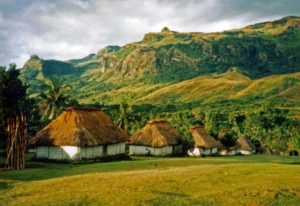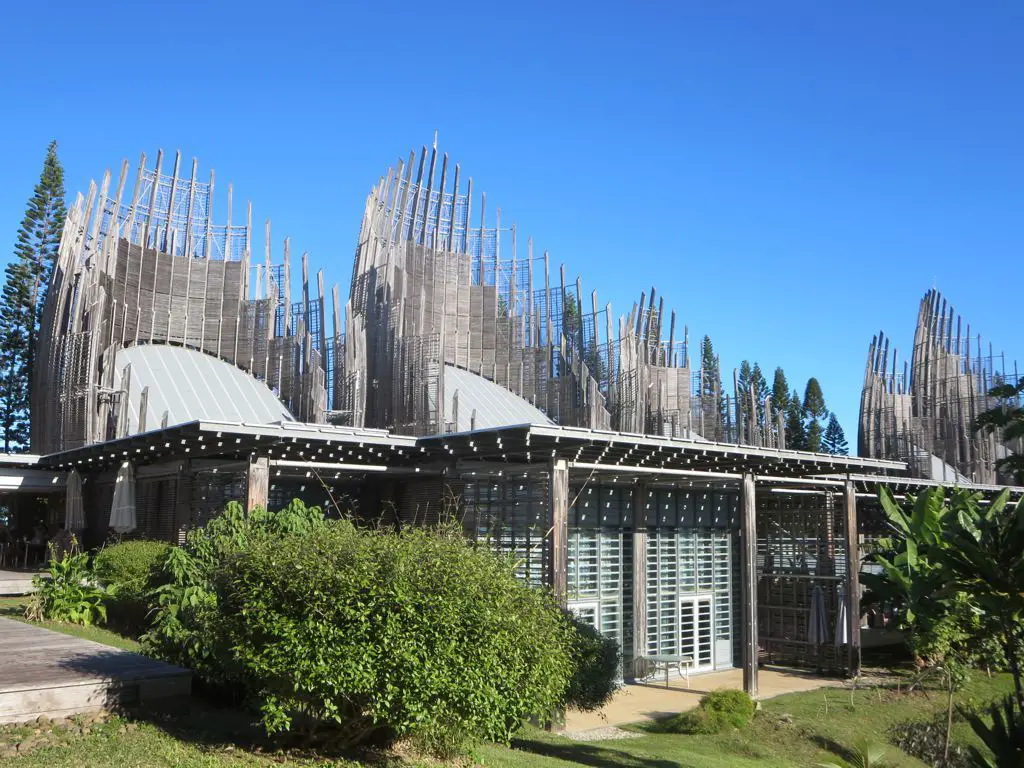Wondermondo 🢖 World 🢖 Wonders of Australia and Oceania 🢖 Wonders of Melanesia
Territory
Wonders of Melanesia
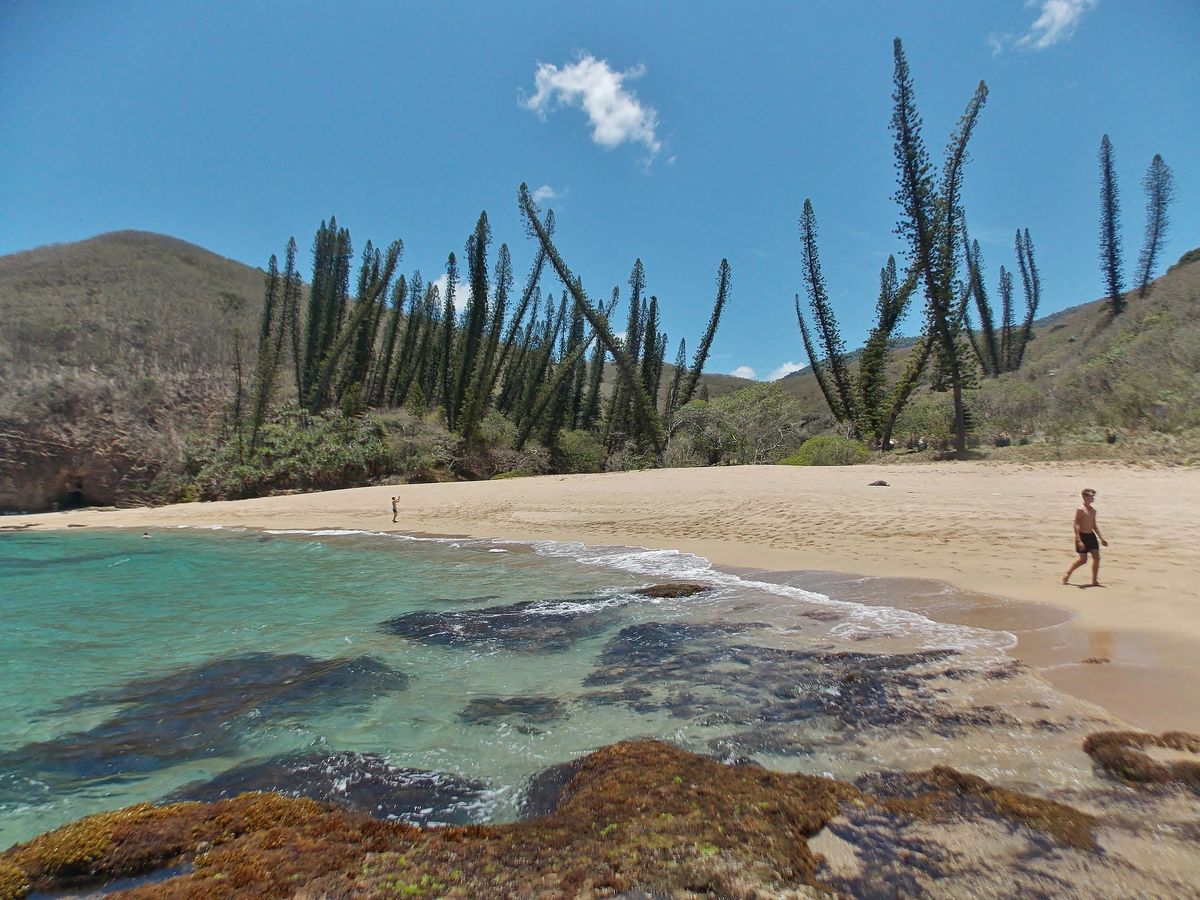
 Highlights
Highlights
The island countries of Melanesia belong to the least known regions on Earth and are incredibly exciting! There are few other places in the world with that many captivating mysteries.
The most amazing wonders of Melanesia are:
- Caves and sinkholes. There are some of the largest sinkholes in the world and some of the most magnificent caves in the world. The most impressive sinkholes are located in New Britania (Papua New Guinea) and caves – in New Guinea.
- Ecosystems. Many islands there still are covered with intact rainforests, and there are located the most diverse marine ecosystems in the world. There are located even glaciers and alpine grasslands. In Melanesia live the largest butterflies in the world, giant beetles, centipedes, stick insects and snails, and many other exotic animals and plants.
- Megaliths, prehistoric cliff art and other archaeological heritage. There are located truly surprising monuments. The region is rich with amazing megalithic monuments and prehistoric cliff art.
- Sites of legends. There are few places in the world where the legends about the supernatural are that much intertwined with reality. Even white people forget their materialism here and start to believe in flying lizards, mysterious forest people, and abandoned islands haunted by the souls of deceased people.
Countries and territories of Melanesia
Melanesia consists of the following countries and territories:
- Coral Sea Islands Territory (Australia)
- Fiji
- New Caledonia (France)
- Norfolk Island (Australia)
- Papua New Guinea
- Solomon Islands
- Vanuatu
Map with the described wonders
If you see this after your page is loaded completely, leafletJS files are missing.
 Top 25 wonders of Melanesia
Top 25 wonders of Melanesia
Geological wonders
Mount Yasur
Vanuatu
One of the most active volcanoes in the world, erupting at least for several centuries. The volcano represents an impressive, barren cinder cone contrasting with the usual forested landscape of Vanuatu. Often several times in one hour can be observed spectacular explosions of molten lava. The volcano is 361 m high.
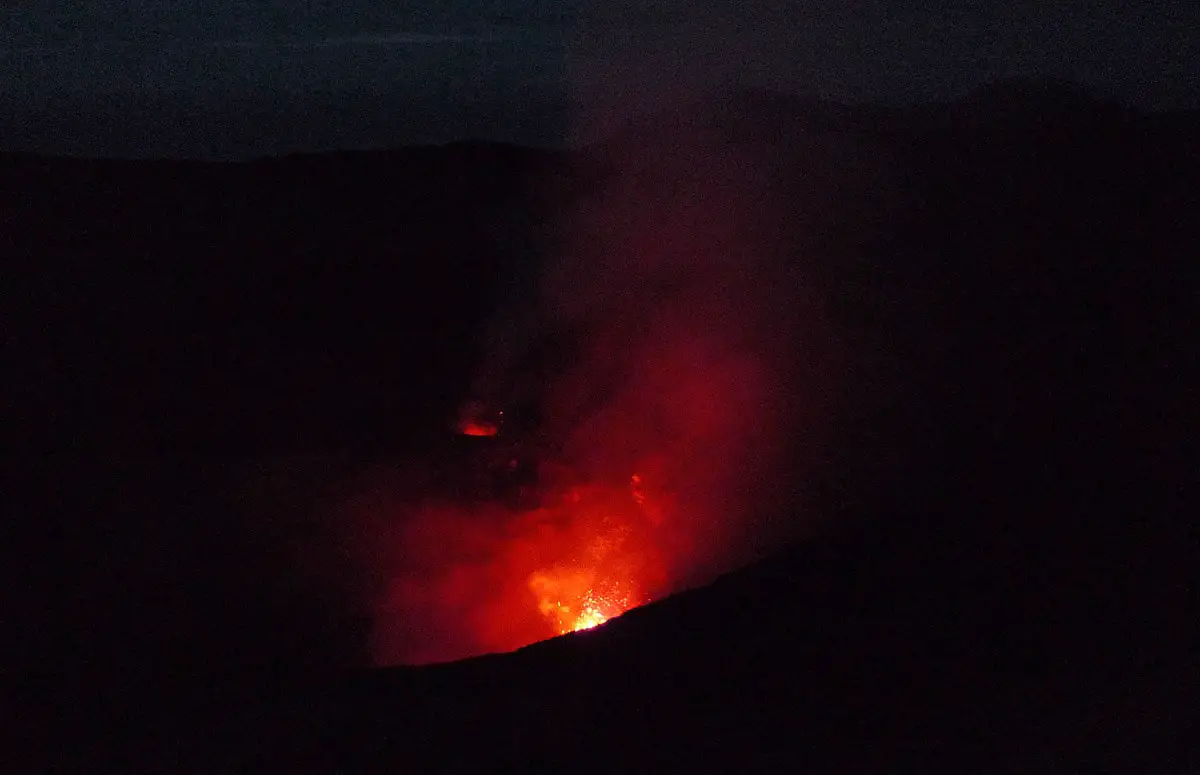
Minyé sinkhole and cave
Papua New Guinea
One of the largest and most impressive tiankengs (giant sinkholes) in the world, located in an exotic jungle and crossed by a powerful underground river. Up to 510 meters deep, 350 meters across, volume – 26 million m³. It continues as a cave system. The explored length of cave passages is 5,421 m, maximum depth – 468 m. Contains one of the largest cave rooms in the world – the Tuké room, 240 m long, 200 m wide, and 130 m high.
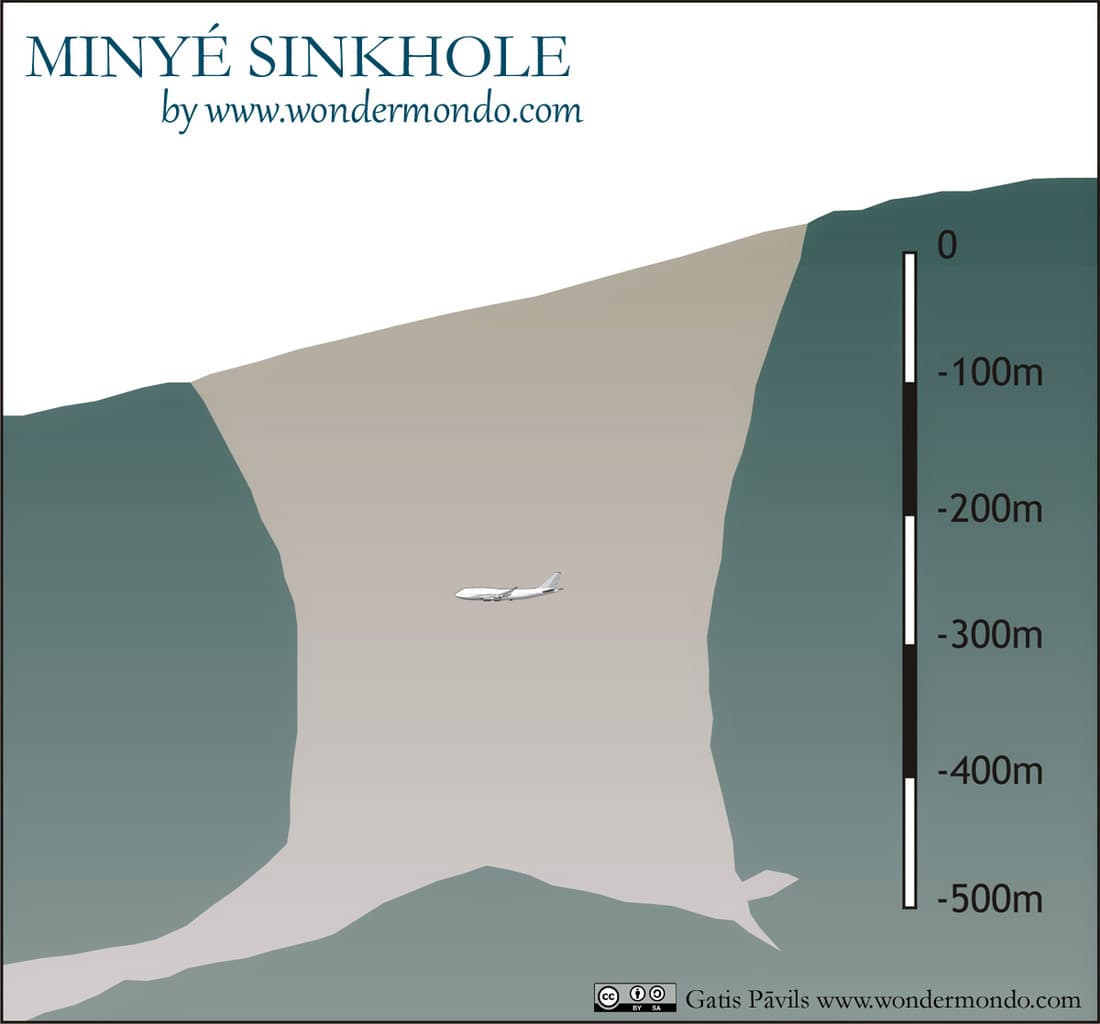
Benbow Crater with lava lake
Vanuatu
A spectacular, very deep hole with vertical walls where for the most time is observed a lava lake. Acid rain formed by the gases from craters has burned approximately 100 km² large plain in the jungle of Vanuatu. Here live specially adapted organisms – insects, and orchids.
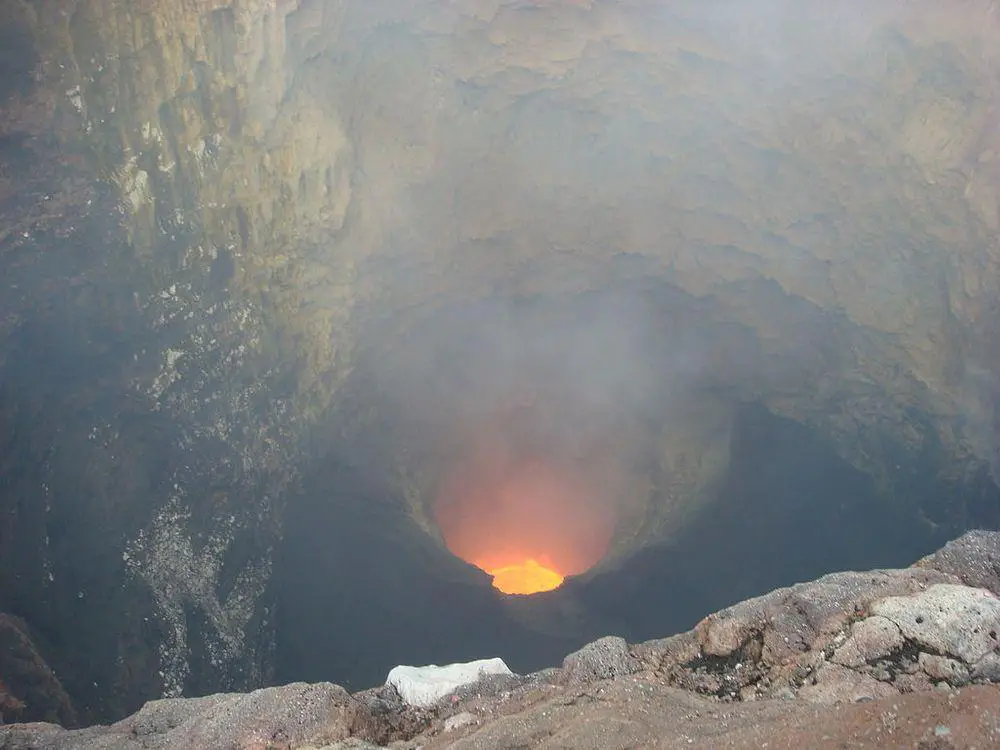
Mbwelesu Crater (Marum Crater) with lava lake
Vanuatu
Up to recent times in Mbwelesu side crater of the greater Marum crater was located one of the rare lava lakes. This was one of the greatest views on Earth.
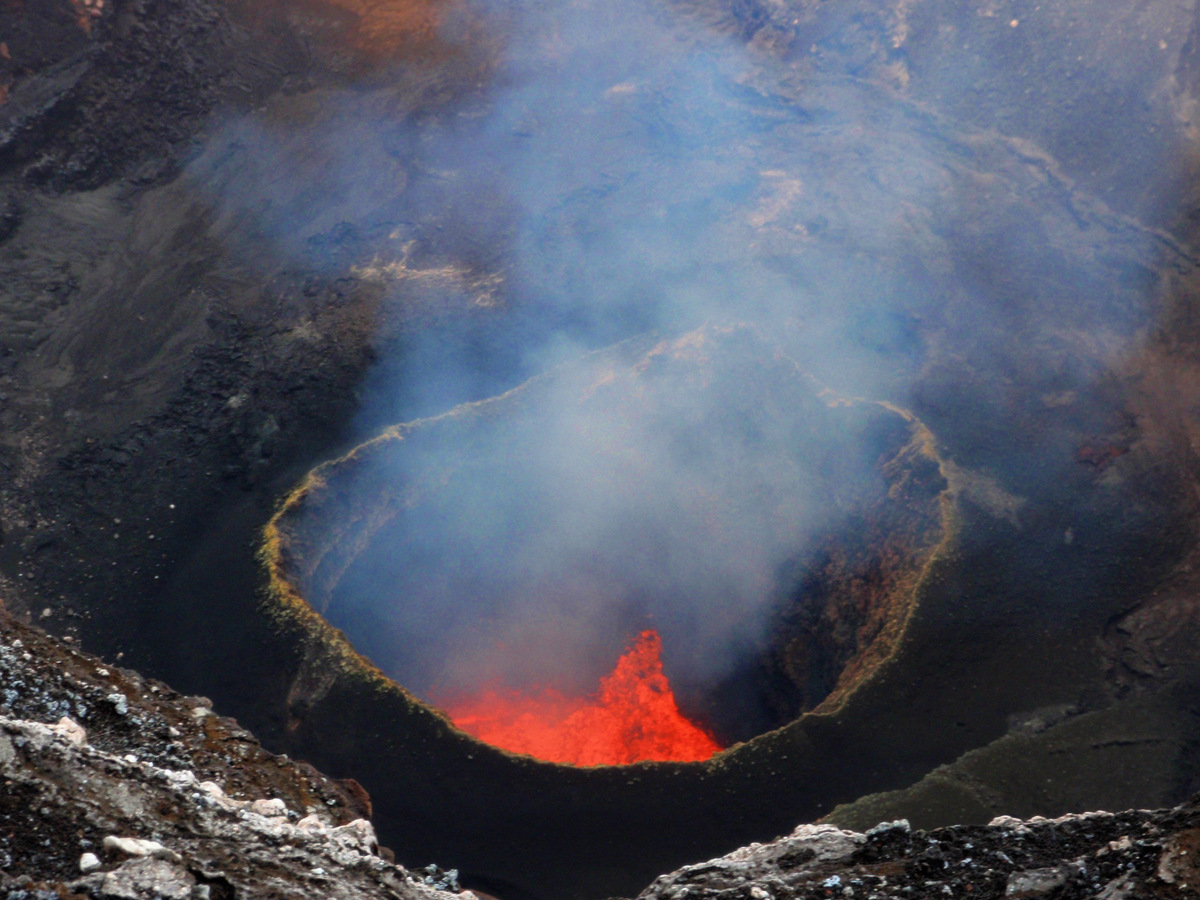
Naré sinkhole
Papua New Guinea
One of the most spectacular sinkholes in the world, also located in an exotic jungle. Up to 310 meters deep, up to 150 meters across, volume – 4.7 million m³. Walls are overhanging, and below flows a powerful river. At the top part of the sinkhole, inside it often is seen clouds. The further cave reaches 415 m depth.
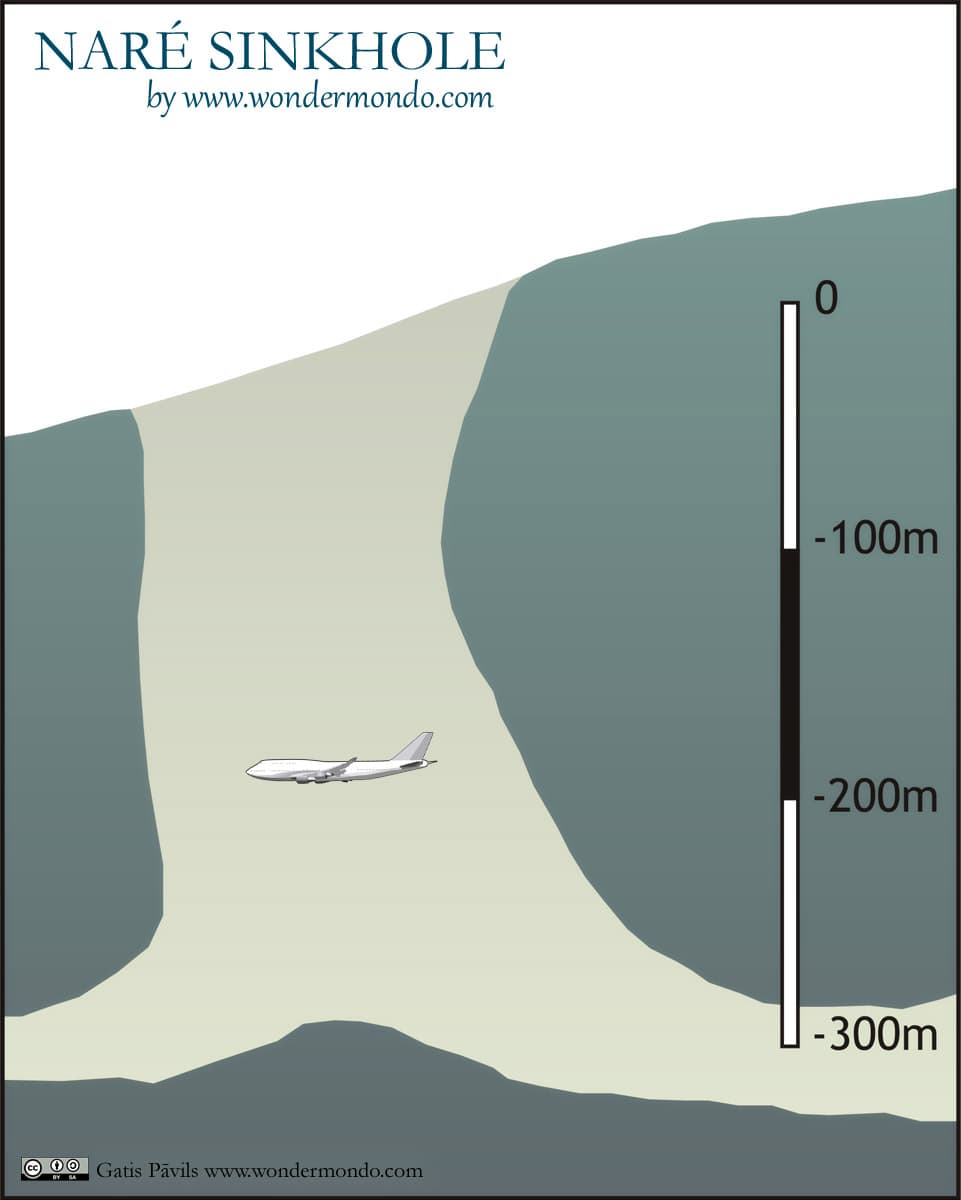
Selminum Tem
Papua New Guinea
A giant cave system, the total explored length is 20.5 km. A skeleton of Miocene syrenian found endemic snails. The cave is very old, with deposits from two glacial periods in it. Contains engravings and other traces of human habitation.
Mount Kaijende pinnacle karst
Papua New Guinea
Very impressive “forest” of limestone pinnacles that rise up to 100 m tall. An almost impenetrable area with extremely high biological diversity.
Alawuro Cave of Vatthe
Vanuatu
A limestone cave in an impressive outcrop rising tall over the jungle of Jordan River alluvial plains. An important site of legends – local people believe that the guardian of Big Bay lives in this cave and protects the local area from construction and logging. Many stories about the magical activities of this spirit. The area has very high biological diversity, and numerous endemic species.
Vatu Vara
Fiji
A „hat island” – a small, forest-covered island with a large limestone plateau in the middle, rising up to 305 m above the sea level. This plateau is surrounded by up to 60 m tall cliffs. The summit of the plateau is rather flat, but with depressions, and small lakes. This island is guyot – a former atoll with a volcanic plug in the middle.
The Hindenburg Wall
Papua New Guinea
Giant, more than 300 m tall, and 25 km long escarpment, has caused unique patterns of air movement that have sculpted the rock surface. Extremely high rainfall (more than 10,000 mm per year) causes frequent landslides.
Bagana volcano
Papua New Guinea
The most active volcano in Papua New Guinea with nearly continuous eruption. Height 1,750 m.
Biological wonders
Riviere Bleue rainforest
New Caledonia (France)
Remnant of New Caledonian rainforest that grows on ultrabasic rocks. Contains a large number of unique species of plants – more than 400 species are endemic to New Caledonia. There lives the densest population of the unique kagu bird (Rhynochetos jubatus).
Norfolk Island subtropical rainforest
Norfolk Island (Australia)
The last remnant (5 km²) of the unique Norfolk Island rainforest, protected by a national park. Here grow many unique endemic plants including the tallest tree fern of the world (Cyathea brownii, up to 20 m tall), Norfolk island palm (Rhopalostylis baueri), endemic orchid and last natural stands of Norfolk pine (Araucaria heterophylla). Here lives also endemic Norfolk Parakeet (Cyanoramphus cookii), Norfolk Gerygone (Gerygone modesta), slender-billed White-eye (Zosterops tenuirostris), endemic land snails and others – in total some 50 endemic species of animals and plants.
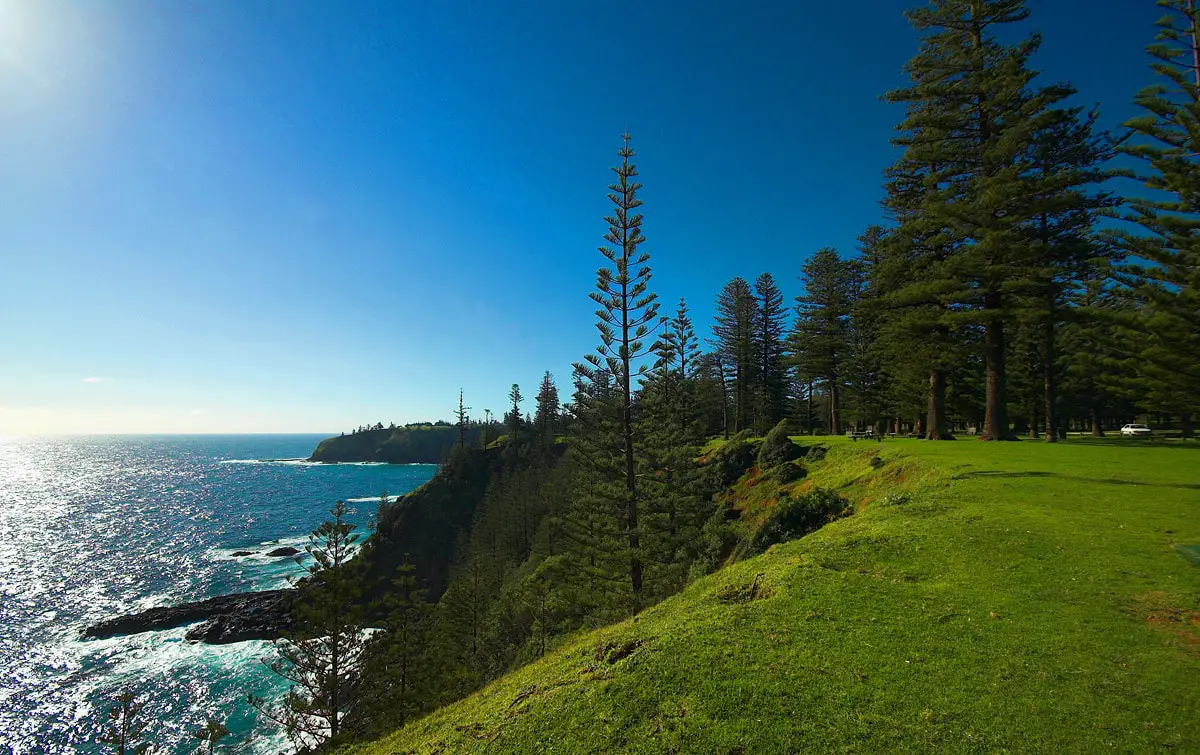
Tiae dry forest
New Caledonia (France)
One of the last remaining stands of New Caledonian dry forest, also one of the last stands of one of the most beautiful flowering plants – Ixora margaretae, known also as Captaincookia margaretae.
Tetepare rainforest
Solomon Islands
Tetepere island is not inhabited for more than 200 years and is one of the last undisturbed lowland rainforests (120 km²) in this part of the globe with several endemic species, including unique freshwater fish. Island has evil fame among the people of nearby islands: according to local legends numerous people died on Tetepare due to evil sorcerers and spirits and now it is considered to be an "island of ghosts".
Happy Lands Kauri Reserve
Vanuatu
One of the last stands of kauri (Agathis macrophylla) – giant trees reaching up to 40 m in height and 10 m in circumference. Earlier it was considered that this is a local species Agathis obtusa, but lately it is joined with other species of kauri in the region. Area with high biological diversity.
Rainforest of Kolombangara caldera
Solomon Islands
Intact rainforest with very high biological diversity, and numerous endemic species. Very high diversity of birds, frogs, orchids, and other life forms. Caldera is 4 km wide and 1 km deep, and on the bottom are several sulfur vents.
Dry tropical forest of Vunivia and Nasavu catchments
Fiji
The last pristine stand of Fijian dry tropical forest with multiple endemic species of plants.
Banyan in Lomteuheakal
Vanuatu
Many historical villages of Tanna island have giant banyan trees that are located in the center of local culture – a dancing place (nasara). The diameter of such trees reportedly reaches 50 m. The tree in Lomteuheakal has an approximate trunk circumference of 26 m. Banyan of Yakel village has a house built on top – this house is used for the circumcision of local boys. Kaluas is considered by locals to be the largest banyan tree in the world. The tree is huge but, unfortunately, no data about its size was found.
Archaeological wonders
Vonavona Skull Island (Kindu, Kundu Hite)
Solomon Islands
Impressive archaeological monument – a tent-shaped wooden shrine with decorated stone slab – door. This shrine sits on the top of a coral mound and is filled with skulls of deceased chiefs. It is possible that in the front of other skulls is located the skull of the feared head hunter-chief Higova (Ingova) who died in 1906. Around the shrine are broken shell rings – offerings.
Skull Cave of Bilubilu
Papua New Guinea
One of the burial caves in Papua New Guinea where numerous skulls of deceased people were brought and still are here up to this day.
Yalo Cave and Apialo Cave
Vanuatu
Caves of the spirits of deceased people who lived in this area. Yalo Cave (120 m long) contains some 750 rock paintings and engravings and Apialo Cave (smaller) has 1500 rock paintings and engravings. Many of these paintings are hand stencils, also drawings of faces. Initially – some 3,000 years ago – caves were inhabited. Many living traditions of local people are linked to these caves. Another important monument is the stone of Navet’itiet located in another cave that also is adorned with engravings. According to the legends, this stone is used by deceased ones to file off their noses.
Architecture wonders
Jean-Marie Tjibaou Cultural Center
New Caledonia (France)
This center celebrates the cultural heritage of the indigenous Kanak people of New Caledonia. The Center has original architecture, blending traditional Kanak architecture and modern inspirations. It is designed by Renzo Piano and built in 1998.
 Recommended books
Recommended books
History of the South Pacific Since 1513
‘The South Pacific since 1513’ is a chronicle of over 1200 principal events in Australia, New Zealand, Polynesian and Melanesian islands, New Guinea, and Robinson Crusoe Island. This book is a comprehensive history and research tool.
An American Anthropologist in Melanesia
Anthropologist Albert Buell Lewis spent four years traveling through the former colonies of Melanesia. The field diaries that he maintained during this period reveal the story of how Lewis overcame extraordinary difficulties to assemble the collection of artifacts now preserved in Chicago’s Field Museum. This book contextualizes the diaries through a descriptive, interwoven commentary, extensive annotation, and a wealth of visual materials.

